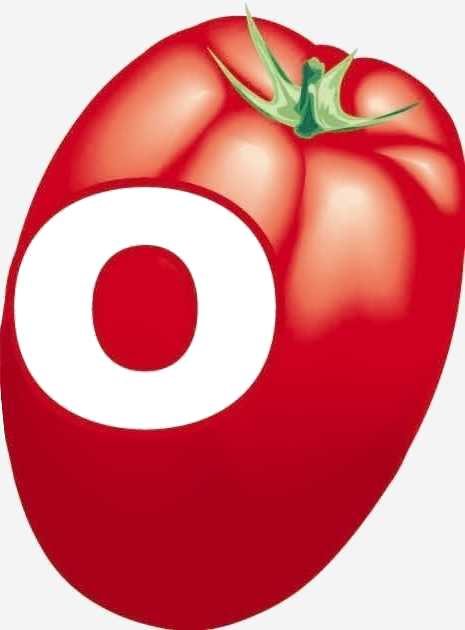Portugal: The TomAC project demonstrates the benefits of applying the principles of conservation agriculture to the production of processing tomatoes.
Tomatoes grown in soil planted only on the crop row and with cover crop residue (mixture of grasses and legumes).
At two meetings in February and March of this year, the TomAC R&D project consortium presented its results. Early February 2024, the CONFAGRI National Technicians' Meeting brought together 600 technicians and leaders of farmers' organizations from all over Portugal, in Évora, for a debate on agricultural policy and technological innovation in the agri-food sector.
At the meeting, Syngenta and its partners in the TomAC research project – "Sustainable production of processing tomatoes through the application of conservation agriculture principles" – presented the preliminary results of the project underway since 2021, with a trial on a 12-hectare plot located in Vila Franca de Xira.
The consortium also met at the end of March 2024 on the trial site, to produce a documentary video of the final phase of the cover crop cycle and highlight the objectives and results achieved (see additional information at the end of this article).
The TomAC project was born of a partnership between Ag-Innov – Center of Excellence of the Sugal Group, which is a tomato producer and processor, Syngenta, MED-UÉvora (Mediterranean Institute for Agriculture, Environment and Development, University of Évora) and APOSOLO (Associação Portuguesa de Mobilização de Conservação do Solo - Portuguese Association for Promoting Soil Conservation).
Three production systems were tested in the trials:
 Conventional: tomatoes are grown in the usual monoculture system, with intense implementation and bare soil during winter.
Conventional: tomatoes are grown in the usual monoculture system, with intense implementation and bare soil during winter. TomCC: 2 of the 3 principles are implemented, principle 1 by mobilizing the row for tomato planting, leaving the remaining soil surface intact and covered with cover crop residues (principle 2), a mixture of grasses and legumes sown in the autumn.
TomCC: 2 of the 3 principles are implemented, principle 1 by mobilizing the row for tomato planting, leaving the remaining soil surface intact and covered with cover crop residues (principle 2), a mixture of grasses and legumes sown in the autumn. Rotation: the 3 principles are applied, principle 1 by soil mobilization only on the planting row, principle 2 by winter cover crops, and principle 3 by biennial rotation of sunflower or corn with tomato. Sunflower and corn are planted using a direct seeding procedure.
Rotation: the 3 principles are applied, principle 1 by soil mobilization only on the planting row, principle 2 by winter cover crops, and principle 3 by biennial rotation of sunflower or corn with tomato. Sunflower and corn are planted using a direct seeding procedure.
Tomatoes are planted in a conventional system with intensive soil use
Ricardo Vieira Santos, researcher at MED-UÉvora, explained that, during the 2021-2022 season, marketable tomato production was 23% to 47% higher under conservation farming methods – 92 t/ha in TomCC and 110 t/ha in rotation – than under conventional production methods (75 t/ha).
The plant cover was installed at the beginning of November 2023 on the plot where tomatoes were to be planted in the spring, with the aim of permanently covering the soil, one of the principles of conservation agriculture. The selected mix of grasses, legumes and cruciferae aims to protect the soil against erosion, improve its structure and biodiversity, reduce nutrient leaching and increase organic matter content and carbon sequestration.
Grasses act by retaining nutrients in the soil, resulting from fertilization applied throughout the cultivation cycle of processing tomatoes, thus mitigating nutrient loss through leaching. After the cover crop residue has decomposed, the nutrients are returned to the soil and can be used by the following crop, i.e. tomatoes. As for legumes, the aim is to fix atmospheric nitrogen and make it available to the soil. With the cruciferae, the aim is to provide a nematicidal effect.
One of the project's conclusions is that the cover crop, made up of a mixture of grasses and legumes, allows more nitrogen to be retained in the soil – 92 to 126 kg N/ha vs. 5 kg/ha retained by natural flora in conventional cultivation methods – protecting it from deep leaching, with notable gains in efficiency and in terms of reducing the risk of groundwater pollution. The nitrogen retained can be used by the tomato crop, which therefore reduces the amount of fertilizer applied and the corresponding costs. Another benefit identified is improved water retention in the soil, which promotes tomato growth right from the start of the cycle.
Crop operating costs are EUR 243 /ha higher with conservation agriculture, but the investment is offset by the increased productivity (between 17t and 35t/ha), as well as by the benefits in terms of improved soil characteristics and the reduced impact of cultivation operations on the environment.
Challenges identified by the consortium include the fact that tomatoes must be harvested when the soil's moisture content is low, in order to avoid compacting the soil and deforming the mounds. Also, the technical itinerary must be adapted for the application of conservation agriculture practices and, above all, a paradigm shift must be accepted in the way cultivation practices mobilize the soil. These considerations all participate in demonstrating that working on the planting row alone can suffice.
"We believe that the application of these conservation agriculture principles can be a means of increasing the sustainability of the processing tomato production system in agronomic, environmental and economic terms," concluded Ricardo Vieira Santos.
Some complementary data
Sources: agroportal.pt, syngenta.pt, vidarural.pt





 To find out more about T
To find out more about T





























